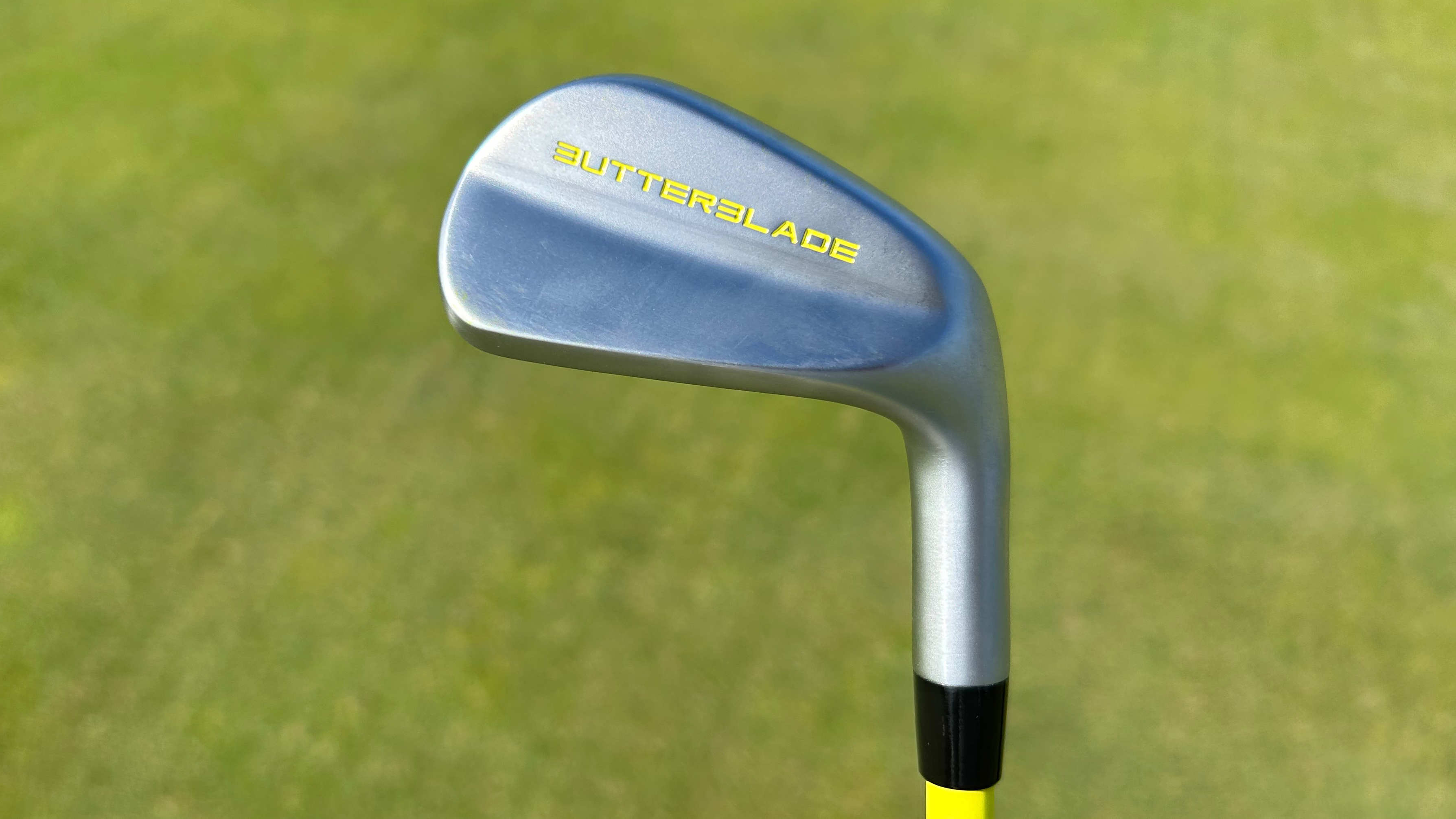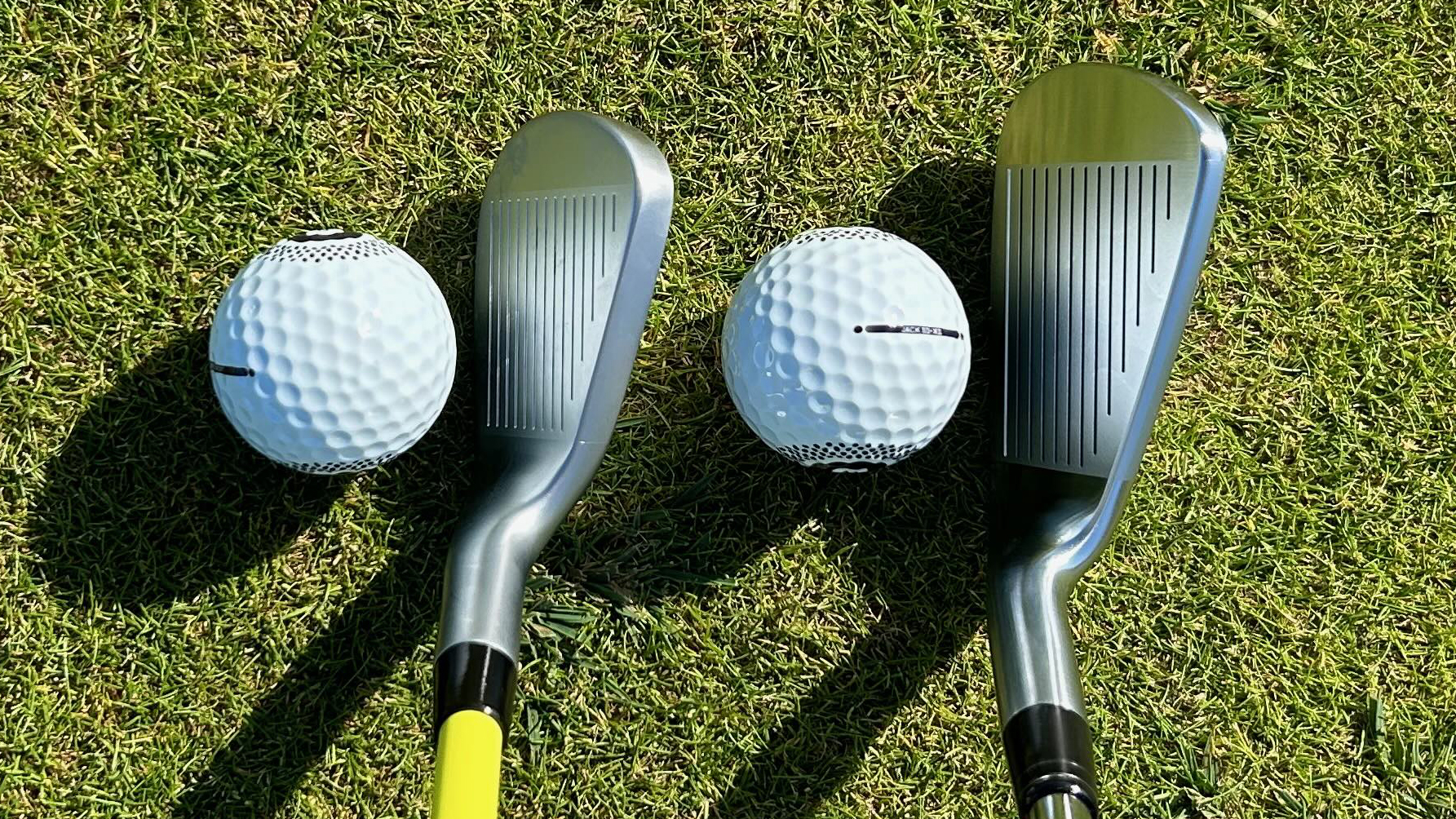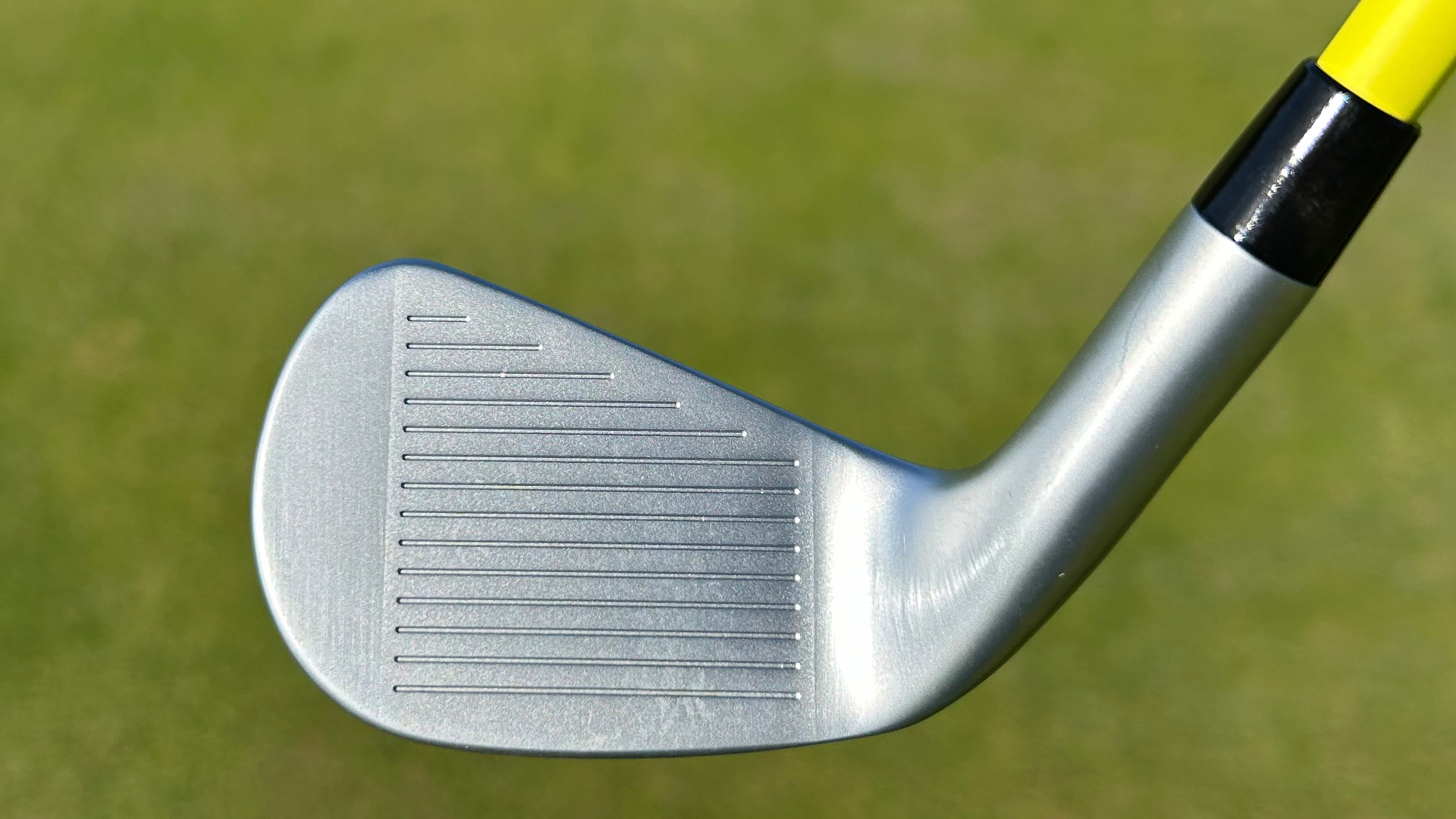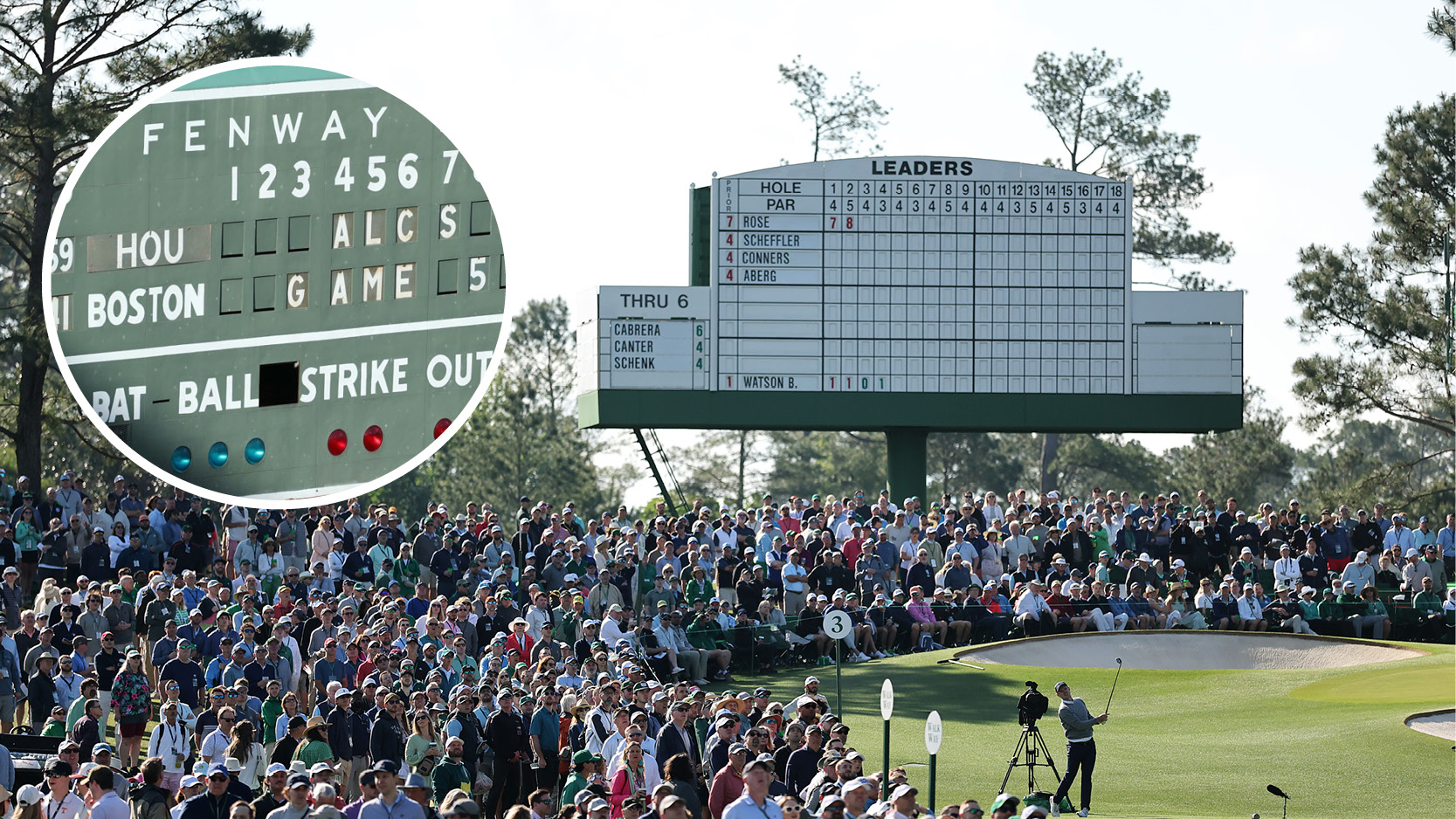Could This Miniature Training Aid Be The Key To Improving Your Iron Play?
PGA Professional Joe Ferguson tests out the ButterBlade from RYP Golf to see if it can improve your game…

The ButterBlade is a simple and well-executed concept. Making your practice tougher than ‘game time’ is one of the fundamental training methods to expedite your development and that is what is on offer. A tiny clubhead sharpens your ball-striking focus, and when you return to your own standard clubs they look and feel friendlier than ever. Simple but very effective.
-
+
Very effective for improving center contact
-
+
Extremely eye-catching colorway
-
+
The clubhead looks and feels great
-
-
As a high-speed player, I felt the shaft could be of better quality
Why you can trust Golf Monthly

I love a good training aid, and here at Golf Monthly, we get sent some of the very best training aids on a pretty regular basis. The ButterBlade from RYP golf however was a little different. I had seen so much of this little yellow golf club on my Instagram feed that I had become personally intrigued, so I actually contacted RYP myself to see if they would send me one. They kindly obliged, so let’s take a look and see if it could help your game…

The extremely compact head of the RYP ButterBlade
The premise couldn’t be much simpler, and we see it with training methods across numerous other sports - if you make practicing a skill harder than competition, when it’s time to compete, the skill should feel significantly easier and your confidence and competence will increase. From distance runners training with weighted vests to boxers shadow boxing in swimming pools for extra resistance and many more, all take advantage of this concept, and that is what RYP is bringing us with the ButterBlade.

The difference in profile size between the ButterBlade (left) and a 'standard' 7-iron (right).
Essentially what we have here is a tiny little 7-iron clubhead, significantly smaller from heel to toe than any other ‘regular’ 7-iron you will find on the market. It comes in both right and left-handed options, ladies, and junior weights, and with numerous shaft flex options which is a real plus.
When you first place the ButterBlade in behind the ball, you wonder how you are ever possibly going to make contact, as it is barely bigger than the ball you are intending to strike! That initial shock passes, however, and my first few swipes were genuinely good, solid golf shots.

PGA Professional Joe Ferguson testing out the ButterBlade
For context, I am a PGA Professional, so my ball striking is reasonable, but it was still a fairly intimidating initial aesthetic. I continued on for around 25 balls with some mixed strike results which was to be expected, and I must say that feedback was excellent. The ButterBlade would not win any awards for the most forgiving irons, but that is exactly what it is designed for. You can immediately tell where you have struck the ball on the tiny club face and can take the necessary corrective action.

Sole of the ButterBlade
The fun really starts when you switch back into your own ‘gamer’ iron, however. After ten minutes or so I pulled out my Callaway Apex CB 7-iron, put it in behind the ball, and it looked enormous! All of a sudden one of the best low-handicap irons had transformed into one of the best game improvement irons right before my eyes. This new perspective genuinely filled me with confidence and the feeling that I just couldn’t miss, and my ball striking reflected that.

Highlighting the heel to toe length difference between the ButterBlade and a 'standard' sized low handicap iron.
The ButterBlade absolutely achieves what it sets out to do which is sharpen your focus for higher quality ball striking, and a residual benefit of that is the incredible confidence boost you receive when looking down at your own clubs after a ButterBlade session. For players lacking confidence in their iron game on the golf course, I would thoroughly recommend a warm-up with the ButterBlade, as by the time you get to your first iron shot you’ll be presented with a much less daunting prospect looking back up at you.

The ButterBlade has a very small hitting area to sharpen your ball striking.
My one gripe with this product would be the shaft, and I am being a little picky here as I really like the ButterBlade as a whole. There is an awful lot of torque to the bright yellow shaft that comes as standard, even in the X Flex that I was sent. When I slowed down some of the videos I took of my swing while using the ButterBlade I noticed some fairly violent twisting of the clubhead through impact that could be reduced with a higher-quality shaft offering less torque. Shots struck slightly off the toe twisted the head extremely open and vice versa. That said, this served to make the ButterBlade trickier to use, which is the whole point right? Even so, I liked this training aid so much, that I am actually going to re-shaft the head with the Project X LS shafts that I use in my actual set and implement the ButterBlade in my practice and warm-up sessions moving forward.
Get the Golf Monthly Newsletter
Subscribe to the Golf Monthly newsletter to stay up to date with all the latest tour news, equipment news, reviews, head-to-heads and buyer’s guides from our team of experienced experts.

Joe has worked in the golf industry for nearly 20 years in a variety of roles. After a successful amateur career being involved in England squads at every age group, Joe completed his PGA degree qualification in 2014 as one of the top ten graduates in his training year and subsequently went on to become Head PGA Professional at Ryder Cup venue The Celtic Manor Resort. Equipment has always been a huge passion of Joe’s, and during his time at Celtic Manor, he headed up the National Fitting Centres for both Titleist and Taylormade. He’s excited to bring his knowledge of hardware to Golf Monthly in the form of equipment reviews and buying advice.
Joe lives in North Devon and still plays sporadically on the PGA West region circuit. His best round in recent years came earlier in 2023 where he managed a 9 under par 63 at Trevose GC in a Devon & Cornwall PGA Tournament.
Joe's current What's In The Bag?
Driver: Switch between TaylorMade Qi35 and Callaway Elyte TD - both with Fujikura Ventus Black 6-X
Fairway wood 1: TaylorMade BRNR Copper Mini Driver - Fujikura Ventus Black 7-X
Fairway wood 2: Callaway Apex UW 17˚- Fujikura Ventus Black 9-X
Irons: TaylorMade P7CB 3-PW with Dynamic Gold Tour Issue X100 shafts
Wedges: Callaway Opus 50, 54, and 60 degrees - Project X LS 6.0 shafts
Putter: LAB Golf Oz.1 (zero shaft lean)
Ball: TaylorMade 2024 TP5x
Grips: Golf Pride Tour Velvet 60R
Bag: Vessel Player IV Pro DXR Stand
-
 Rory McIlroy Wins The Masters In Playoff To Complete Career Grand Slam
Rory McIlroy Wins The Masters In Playoff To Complete Career Grand SlamThe Northern Irishman battled past Ryder Cup teammate, Justin Rose to finally seal his first Masters title and become the sixth man to win all four men's Majors
By Jonny Leighfield Published
-
 Did You Know The Masters Leaderboard Was Inspired By Fenway Park?
Did You Know The Masters Leaderboard Was Inspired By Fenway Park?The Masters leaderboards are an iconic and historic part of the Augusta National Major, but did you know about its origins and how it operates today?
By Matt Cradock Published
-
 Why The 16th Pin Has Been Moved From Its Traditional Spot For The Masters Final Round
Why The 16th Pin Has Been Moved From Its Traditional Spot For The Masters Final RoundThe 16th pin at Augusta National is in an different position that normal for the final round of The Masters, but why is that?
By Mike Hall Published